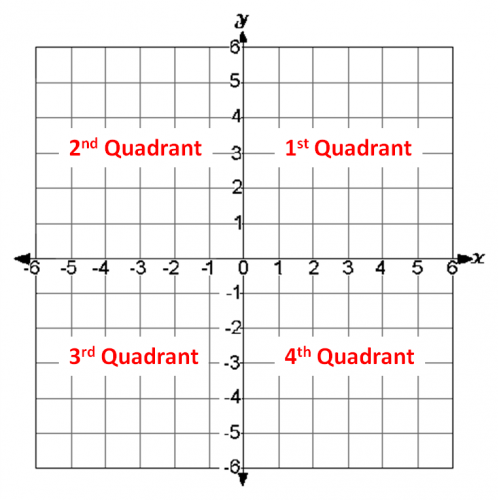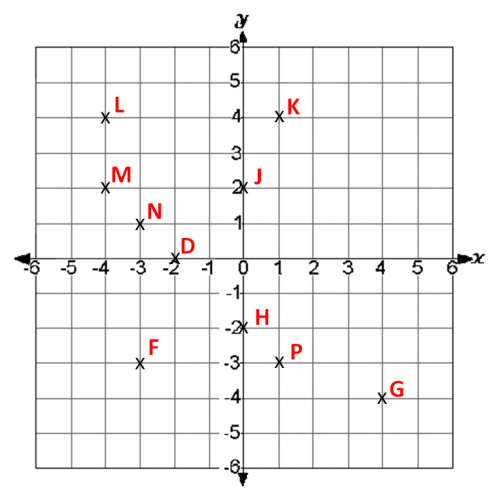We use coordinates to describe the position of a specific point on a coordinate grid.
The coordinate grid is divided into four quadrants, shown below:

Coordinates are numbers written in brackets, like (3, 8) or (4, -2).
The first number is the x-coordinate.
This describes how far along the (horizontal) x-axis to go.
The second number is the y-coordinate.
This describes how far up the (vertical) y-axis to go.
e.g. Look at the points shown on the coordinate grid below.
K has coordinates (1, 4). N has coordinates (-3, 1). F has coordinates (-3, -3) and P has coordinates (1, -3).

Where both the x- and y-coordinates are positive, the coordinate will appear in the 1st Quadrant.
Where the x-coordinate is negative but the y-coordinate is positive, the coordinate will appear in the 2nd Quadrant.
Where both the x- and y-coordinates are negative, the coordinate will appear in the 3rd Quadrant.
Where the x-coordinate is positive but the y-coordinate is negative, the coordinate will appear in the 4th Quadrant.

In this activity, we will identify the quadrant location of specific coordinates and solve problems involving coordinates using both negative and positive values for the x- and y-coordinates.








